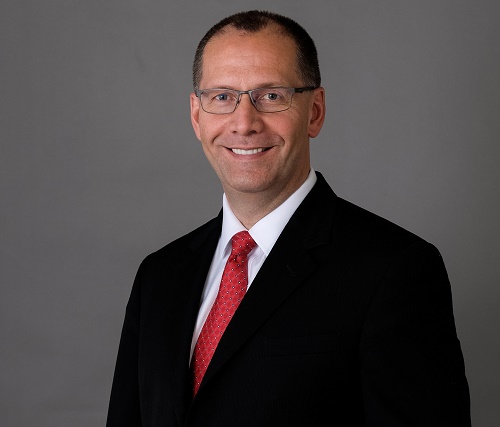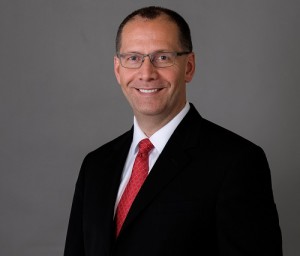Welcome to Game Changers, a new series that we are introducing today.
What is a “game changer”?
It’s a person who has an idea that completely changes the way a situation develops. It could also be an organization that employs new strategies and process to create ideas or events that transform the environment or playing field where that organization operates.
In the following days, we will post brief profiles of the Game Changers that we at Vanguard have recently interviewed.
Our series begins with Mike Greenley, vice president and general manager of CAE Canada.
Mike is responsible for all the defence and security business of this Montreal-based simulation and training technology and services firm that has more than 700 employees working over a dozen facilities spread across the country.
Read on to find out what makes him and CAE Canada game changers.
Questions about Mike Greenley
How did you start out in this industry and how has it brought you to where you are today?
MG: I started out in the defence sector during my time at university, where I was a co-op student at the University of Waterloo, and I completed 3 work terms at Defence Research and Development Canada (DRDC) Toronto laboratories. There I conducted research projects and analysis of the transfer of training resulting from virtual simulation. I studied whether a virtual simulator of a military platform could replicate the same training effect as the actual live system. Today, that strong technical base in human performance and training effects serves me well as an executive at CAE, where our core business is the development and operation of training systems.
What is your role in your organization today?
MG: Today I am the Vice President and General Manager of CAE Canada. This means that I am responsible for all Defence and Security business in Canada. I have over 700 outstanding employees working at over a dozen sites, all across Canada from coast to coast.
What was your worst moment?
MG: My worst moment in my entire career was missing out on a key promotion opportunity many years ago. However, like any challenge, “what doesn’t kill you makes you stronger”, and I learned a lot about corporate dynamics that continues to help me perform better today.
What was your A-HA moment or epiphany that you think will resonate most with our reader? Tell us that story.
MG: A few years ago I received the opportunity for in-depth executive coaching from an excellent firm in the United States. This coaching lasted over a two- year period and was very intrusive and personal, and very effective. Mid-way through this process, once my coach got to know me and the entire executive team members very well, the coach made a comment which for me was an “A-HA” moment. He said… “Mike, it is important for any executive to truly understand their role within a corporate team, as it relates to leveraging their strengths to maximum effectiveness. I think your role at the executive table might be to make everyone else around the table stronger. In your case, it’s not as much about you and your growth, it’s about your interaction with others and how you lift their growth”. That was a key moment for me, that has had a large impact on how I lead people and teams, and work with people across the organization.
Step back and analyze your journey, what is the takeaway you want to give to our audience?
MG: I think there are a few key takeaways from my journey…First, is that establishing a strong technical competence early in your career can serve you well all the way through, as for me, my deep experience across army, navy, and air system technical programs in the first decade makes me a stronger corporate leader now. Second, always share the mindset of the customer, think like they are thinking, share their goals and objectives, and align your business to that. Third, “size doesn’t matter”, in that it does not matter the size of the organization you work for as my early years in small business really taught me to “own” responsibility and to understand all aspects of the business (engineering, finance, human resources, legal, tax, etc), and then in the second half of my career in large publically traded corporations all those same skills were still critical, there was just more zeros in the numbers and more people on the org chart.
What is the one thing that has you most fired up today?
MG: Next Generation Training Systems have me really fired up today. The systems approach to training is undergoing a minor revolution with the advent of Closed Loop, Self-Paced, and Performance-Based training systems enabled through Live-Virtual-Constructive (LVC) simulation-based content. The impact of this is extraordinary, in terms of the potential to increase student engagement and, as a result, student retention, to maximize student success rates, to optimize the learning time customized to the individual student’s needs, and to truly optimize the expense of developing a trained professional. I have the opportunity to lead a strong team in a world leading training organization at a time when this transformation is taking place, and it is very exciting.
What is the best advice you received?
MG: “Show value, then ask for money” … is the best advice I ever received, and I obtained that advice from a book that I read very early in my career called “The Consultant’s Calling”. It is so important when delighting customers or engaging employees to truly understand their need, then to clearly demonstrate value to them from your organization, and then only after that to ask for more in that relationship. Asking for more might mean a particular order or a larger opportunity to work with a customer, or for a “dig deep” moment from an employee. The entire process of “consultative selling” has been big in my career as a result, whereby we strive to solve the customers challenge through whatever combination of product/services/systems makes sense, and not just try to jam our favorite product under their nose.
What habit contributed to your success?
MG: Persistent passion is a key habit that has served me well through my career. I am always fully engaged technically, aligning the talents of the company with the challenges of the customer, and I passionately promote the way ahead both within and outside the organization. As others have always commented to me on the importance and impactfulness of that approach, I would say that has been a key habit. Like any habit, it requires energy and repeated practice to instill and refine it.
What is your parting piece of advice?
MG: “Own it”. If every person, at each layer, of any organization had a grip on their role and the strategy of the company, and they truly “owned” their piece of it, an organization would be untouchable. No waiting for others to tell you what to do, no blaming others for not getting their part done, just be fully present and “own it”, with no excuse. There is no better feeling of success when you owned it and it worked, and there is no better feeling of the power of a team when you are aligned and each member truly owns their part. It’s awesome.
What people or organizations do you believe best embody the innovation mindset?
MG: Boundless thinkers connected to the end user mindset. When individuals or teams focus on an end user challenge, and strive to bring massive beneficial change to that end user, and do not accept existing constraints of the current people, process, tools, or technologies then true innovation results.
Questions about CAE
How is your organization changing the game within your industry sector?
MG: CAE is changing the game in the area of defence training systems. The company is doing this through our innovation in the development and delivery of next generation closed-loop, performance-based, training system design. This enables us to deliver and manage highly effective training systems, tailored to individual learning styles that increase student retention and success, decrease dropout rates, maximize effectiveness, and minimize cost. When we combine this with scaleable Live-Virtual-Constructive technical solutions within the training media itself, we are finding that we are able to offer highly effective training solutions to military customers worldwide.
What are some of the biggest impediments to innovation in your organization or industry?
MG: One of the biggest impediments to driving innovation in the defence sector is acquisition cycle time. Innovation is targeted at a customer challenge, and when the customer only purchases a new system once every 25-40 years and takes 5-10 years to complete that acquisition process it can drag down the process of advancing and deploying innovation. At CAE, we get around that challenge in two ways, because we export worldwide to over 100 countries so there is always someone buying something somewhere, and we are a dual-use industry in that our core training system solutions are deployed not just in the defence sector but also in civil aviation and health care training systems. This market mix ensures that we are constantly innovating, and constantly able to deploy, evaluate, and improve on that innovation across multiple markets.
What are the biggest impediments to innovation in today’s enterprise?
MG: In any enterprise, one of the biggest impediments to innovation is resources. A company committed to innovation must dedicate the financial resources, which in turn dedicates the human resources, to the innovation process for both near term and medium/long- term advances in their capability and offering. Fortunately, I get to work at a company that does that.
How has innovation become ingrained in your organization’s culture and how is it being optimized?
MG: Innovation is ingrained in the CAE culture through our research and development (R&D) processes, which are NOT just a “behind-closed-doors engineering environment”. At CAE, the full business is engaged in the innovation, with front line business development and sales personnel driving customer needs and opportunities, linked to next generation R&D team work plans, linked to executing Program and Project Managers who drive R&D and innovation into their specific solutions for their customer. The entire business network is aligned with an innovation framework.
What technologies, business models, and trends will drive the biggest changes in your industry over the next two years?
MG: Integrated Live-Virtual-Constructive simulation environments, enabled through cyber secure distributed simulation networks, will drive significant change over the next two years. These technologies have been maturing and improving over the past 15 years, but we are now seeing our latest programs and proposals fully implementing these technologies into operational training systems. In addition, closed-loop, performance-based training system management frameworks will have a large impact on training system design and optimization.
Click here to view other Game Changers


